Project Type: International competition
Project Period: Dec. 2019~Feb. 2020
Building Type: Library
Location: Gwangju-city Korea
Building Area: 3,871 ㎡
Total Floor Area: 10,973 ㎡
Participant Team: Eungjun Lee, Hyeongseok Song, Younghoon Lee, Yoonjung Kim, Jisoo Park, Jieon Ahn, Soohong Baik, Seongmin Im, Seokhyun Song, Yoshiaki Ueta, Haruki Miyazaki
프로젝트유형: 국제건축공모전
프로젝트기간: 2019년 12월~ 2020년 2월
건물유형: 도서관
위치: 한국 광주시
건축면적: 3,871 ㎡
총연면적: 10,973 ㎡
참가자: 이응준, 송형석, 이영훈, 김윤정, 박지수, 안지언, 백수홍, 임성민, 송석현, 요시아키 우에타, 하루키 미야자키
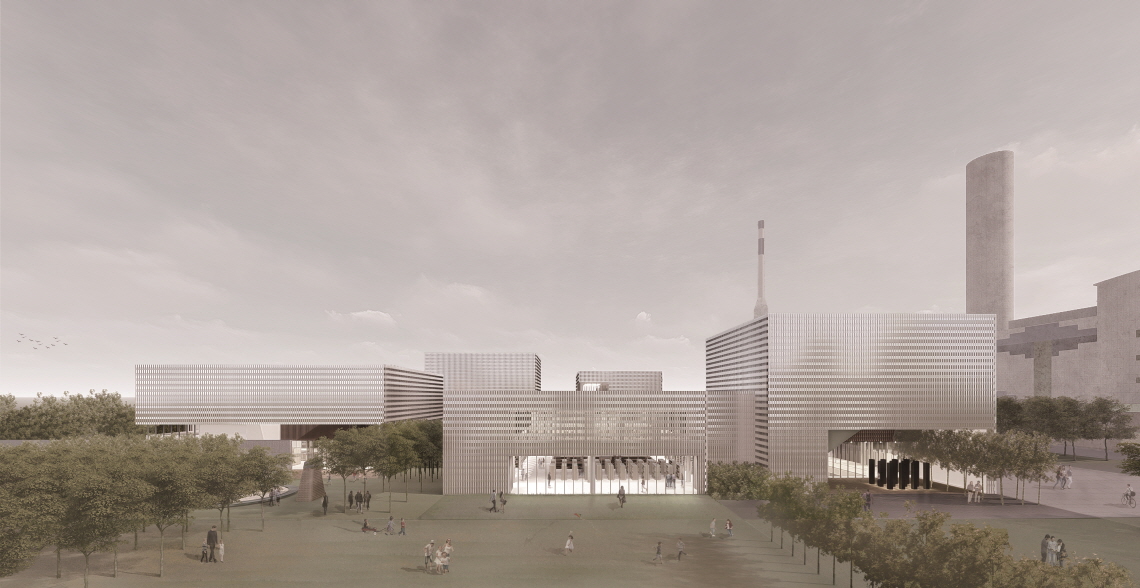
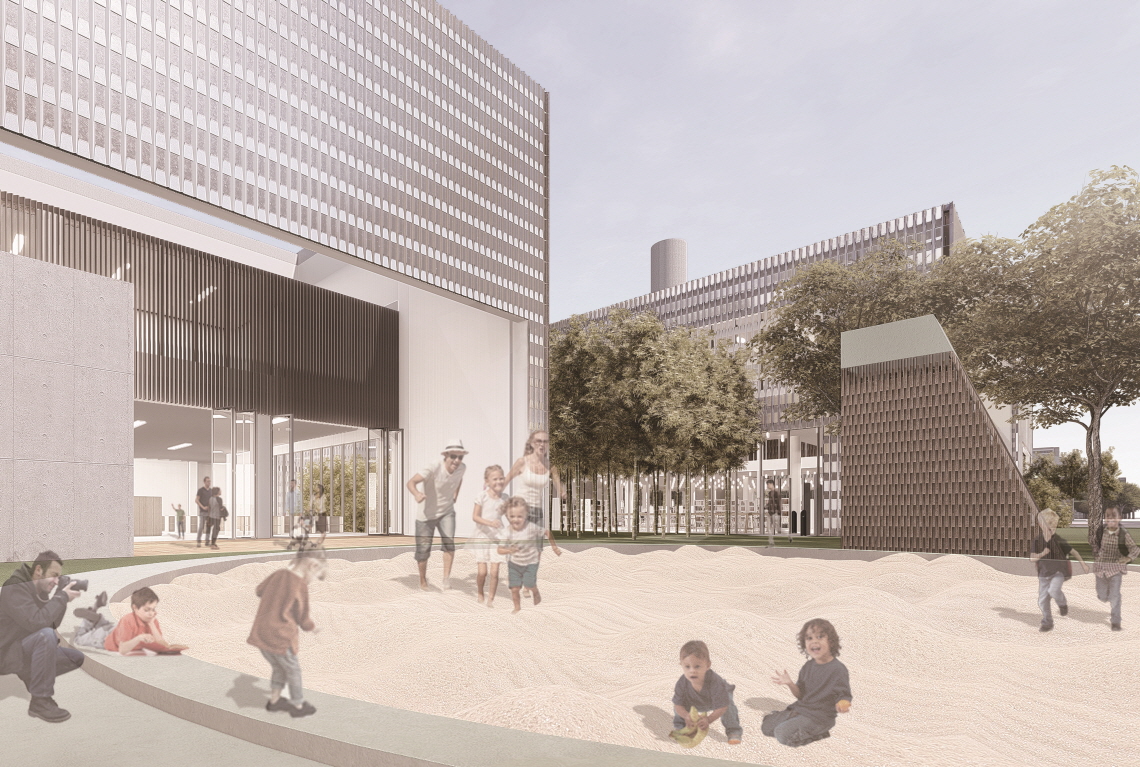
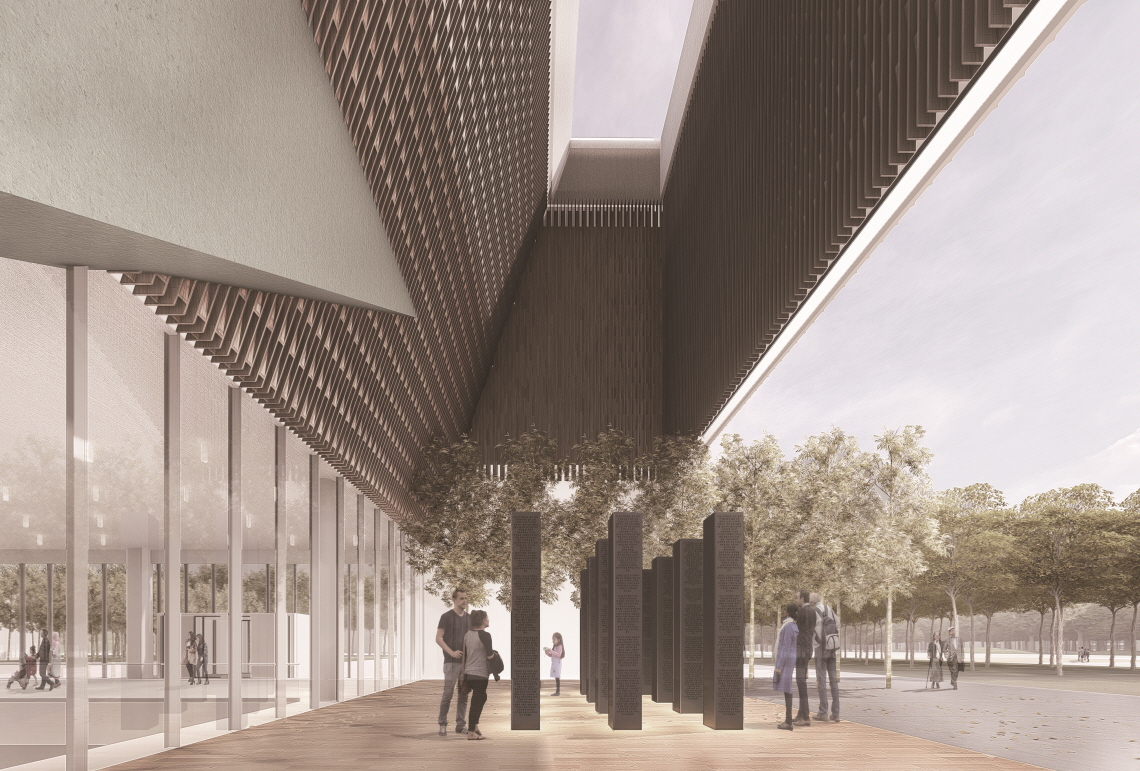
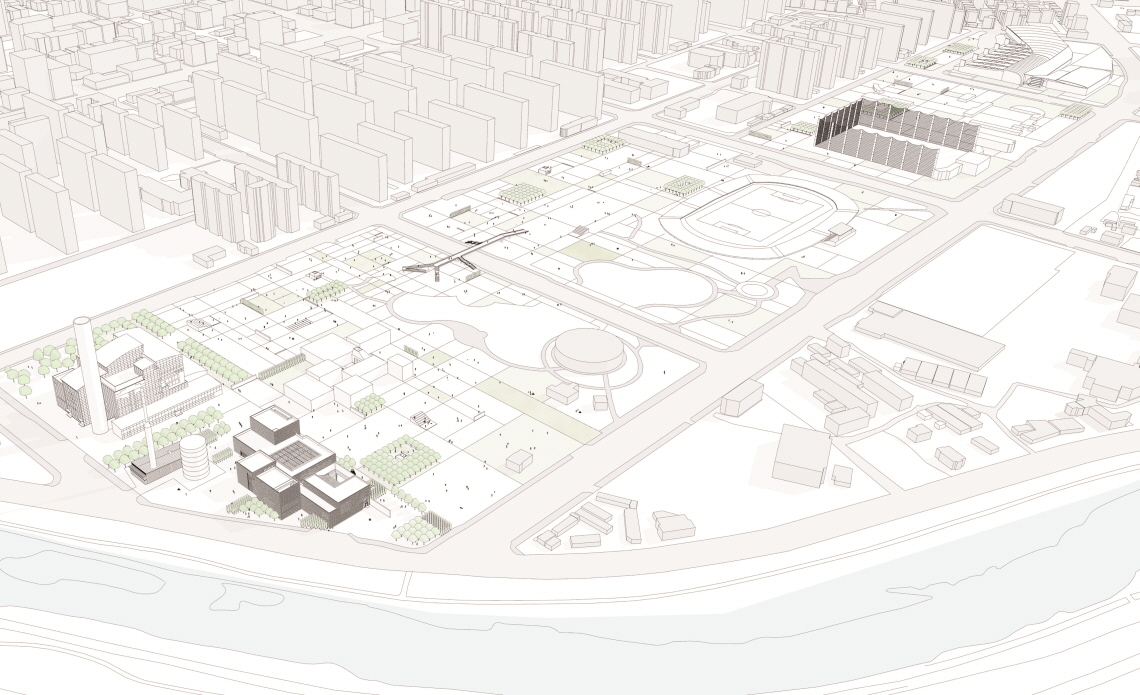
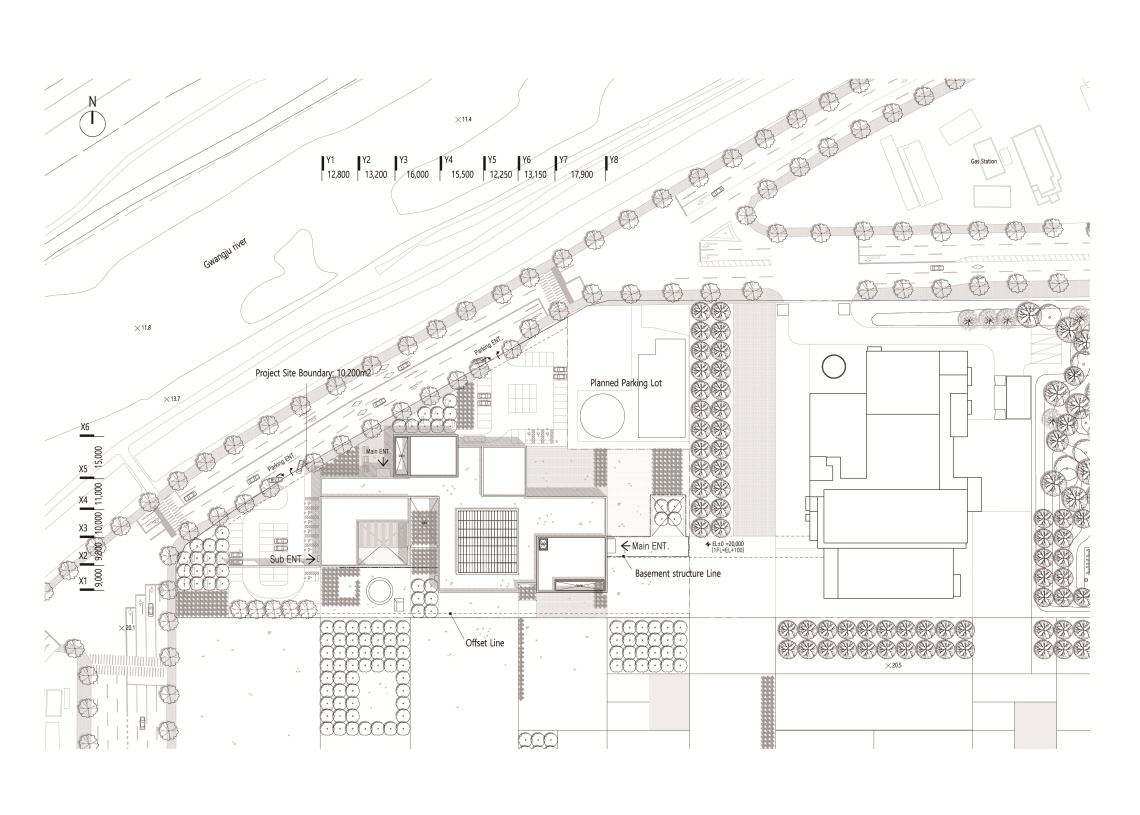
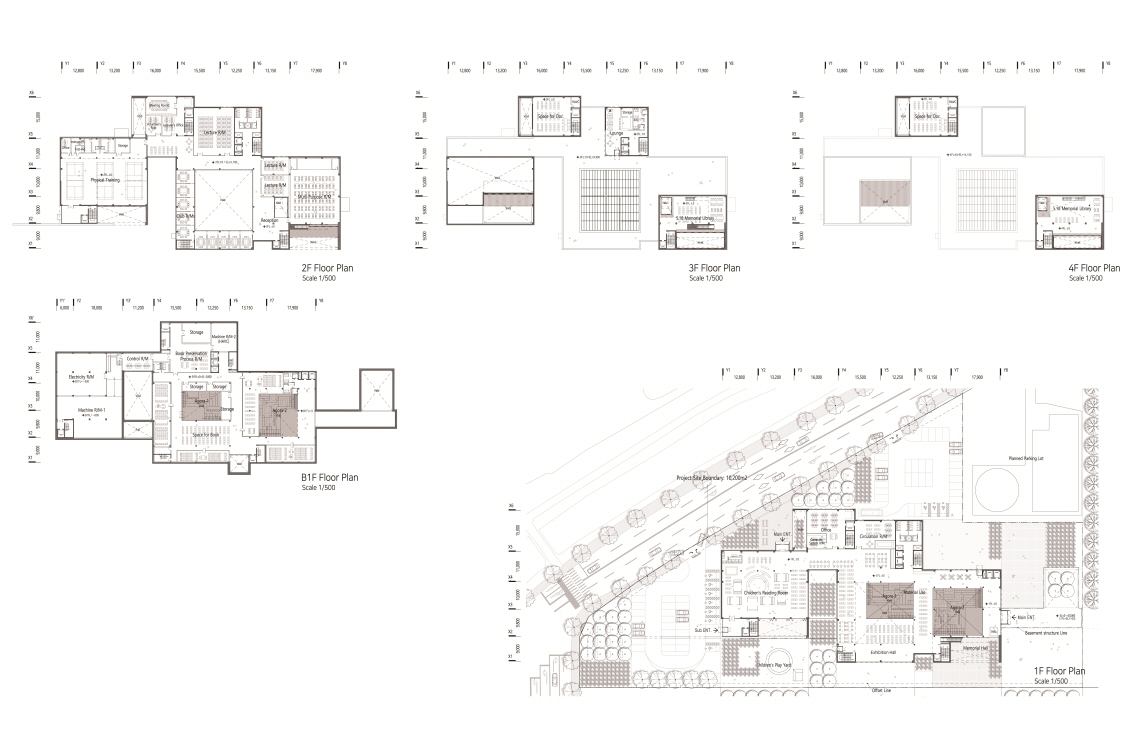
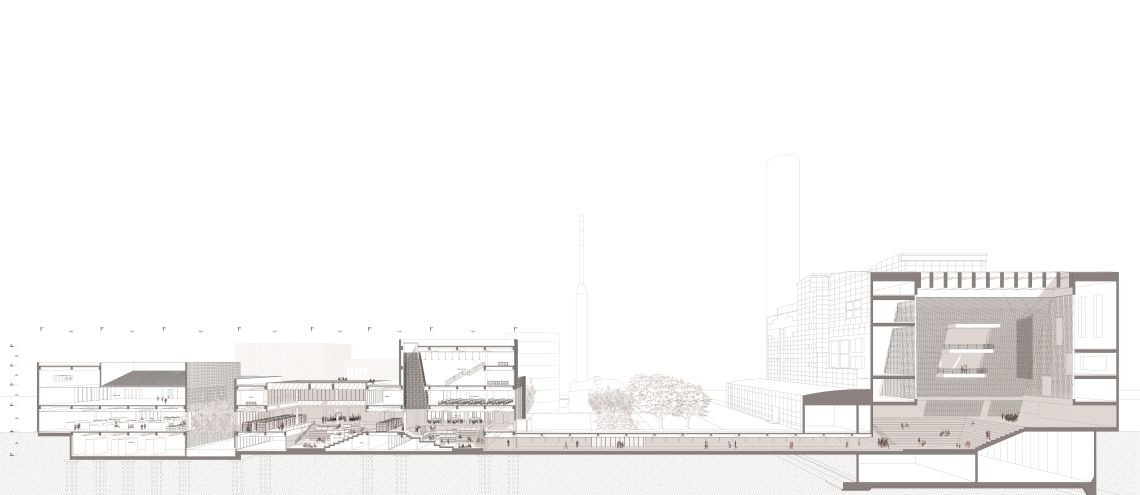
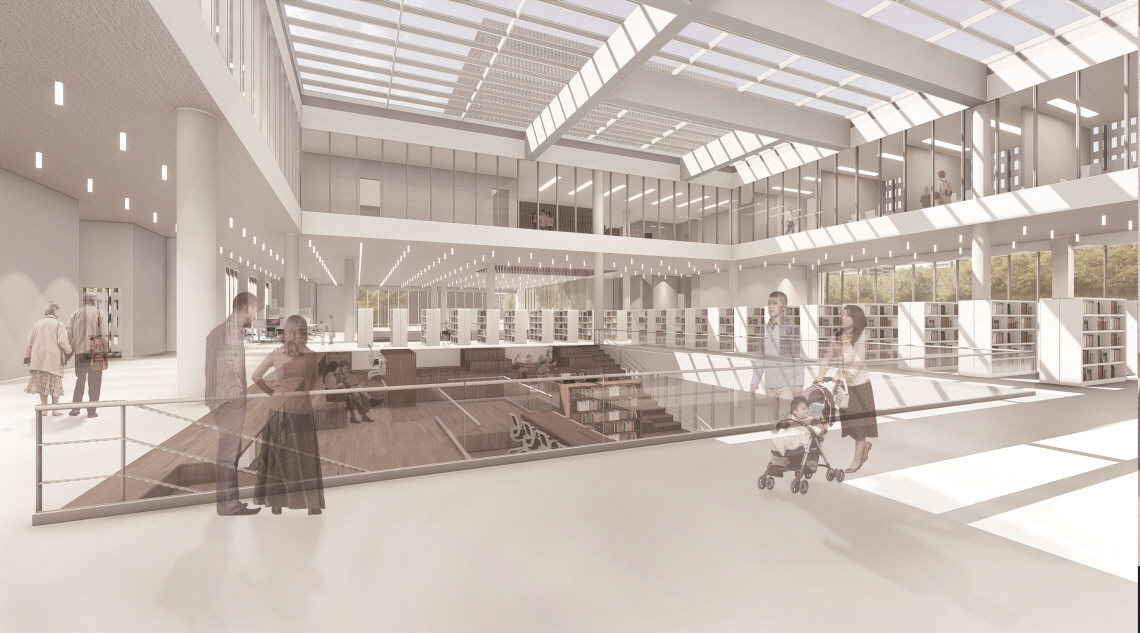
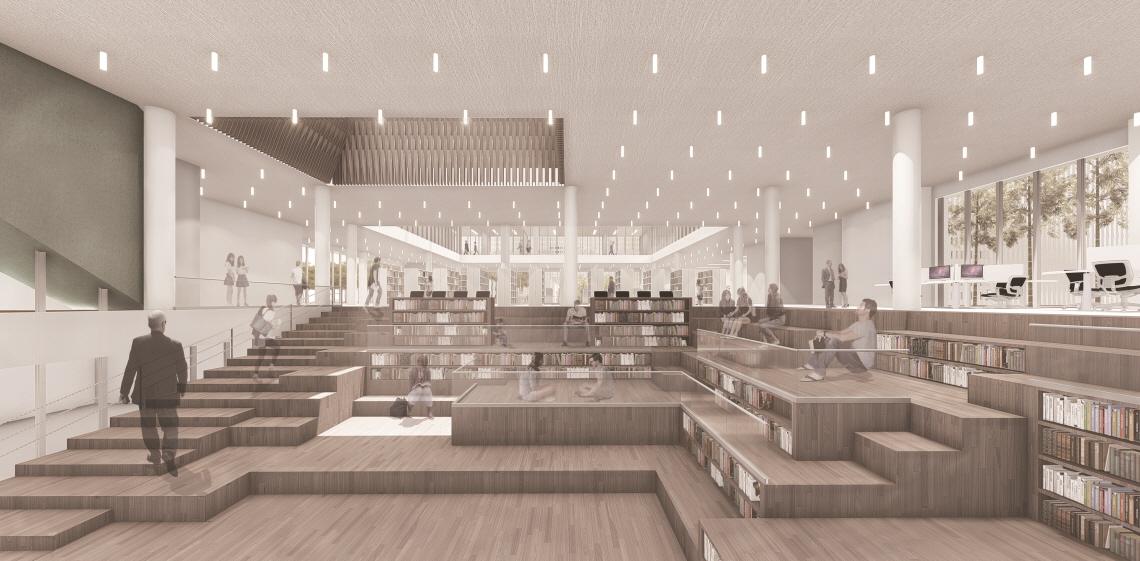
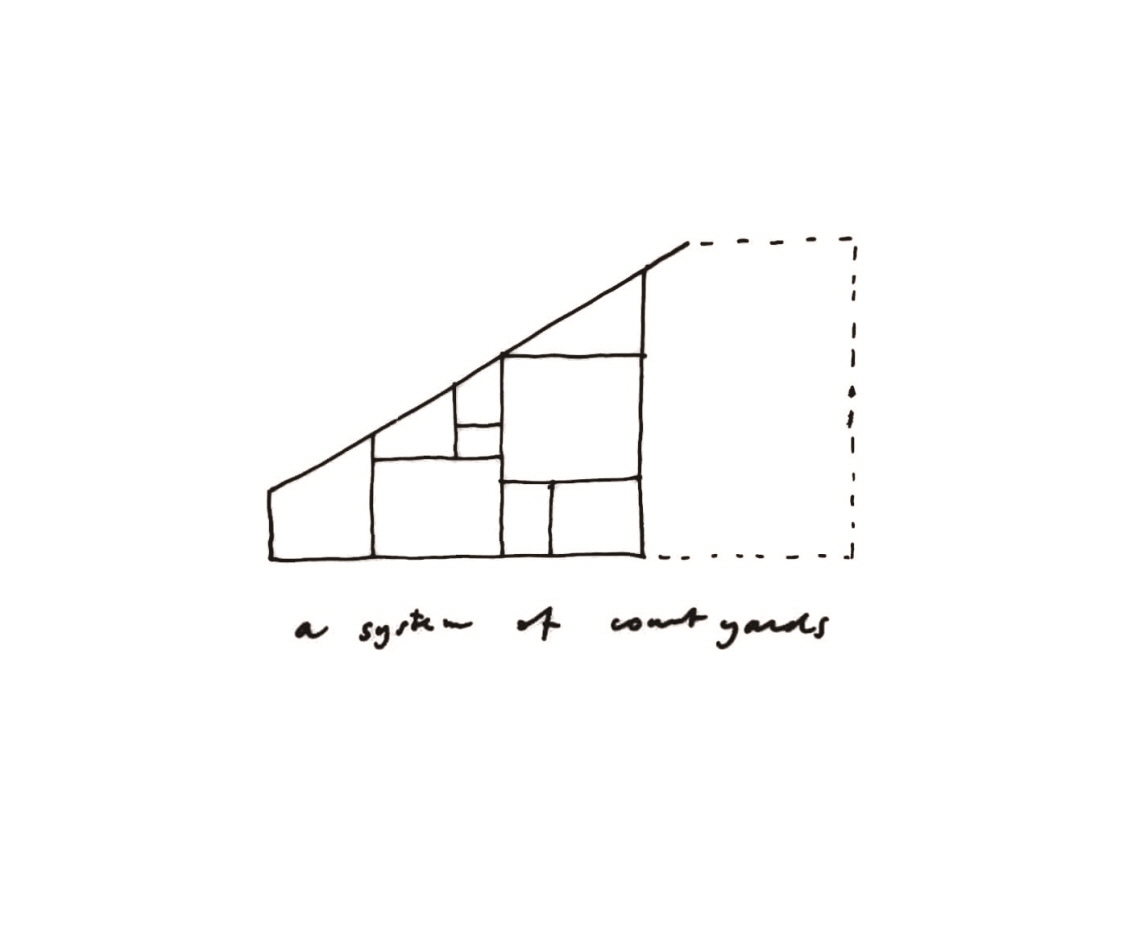
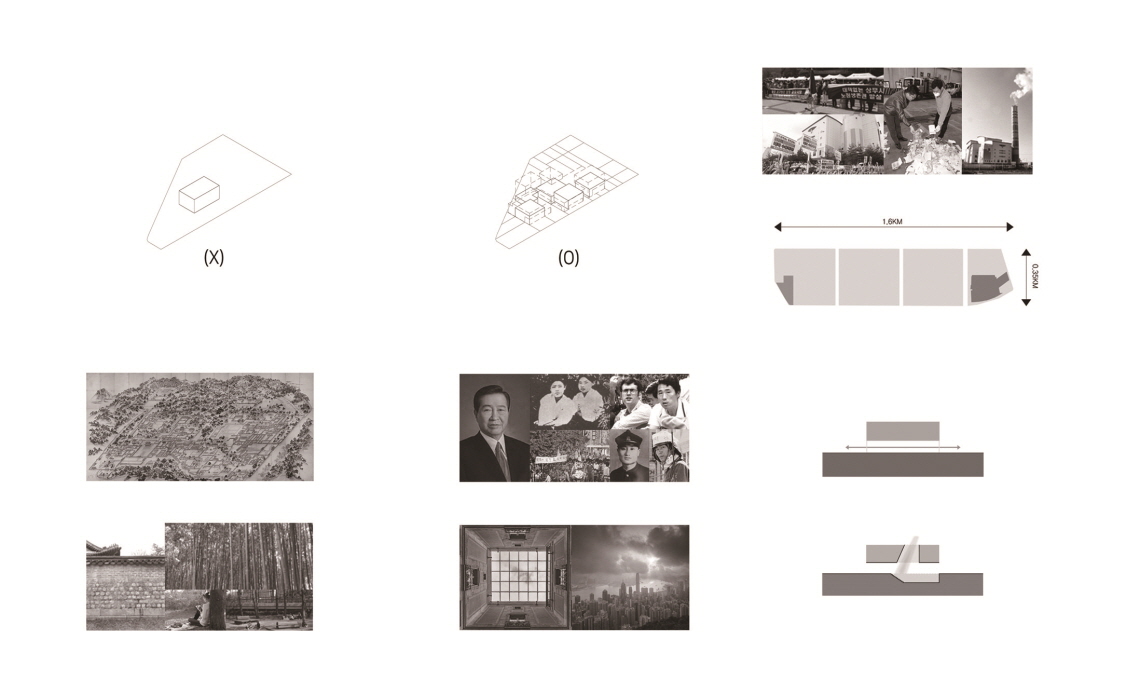
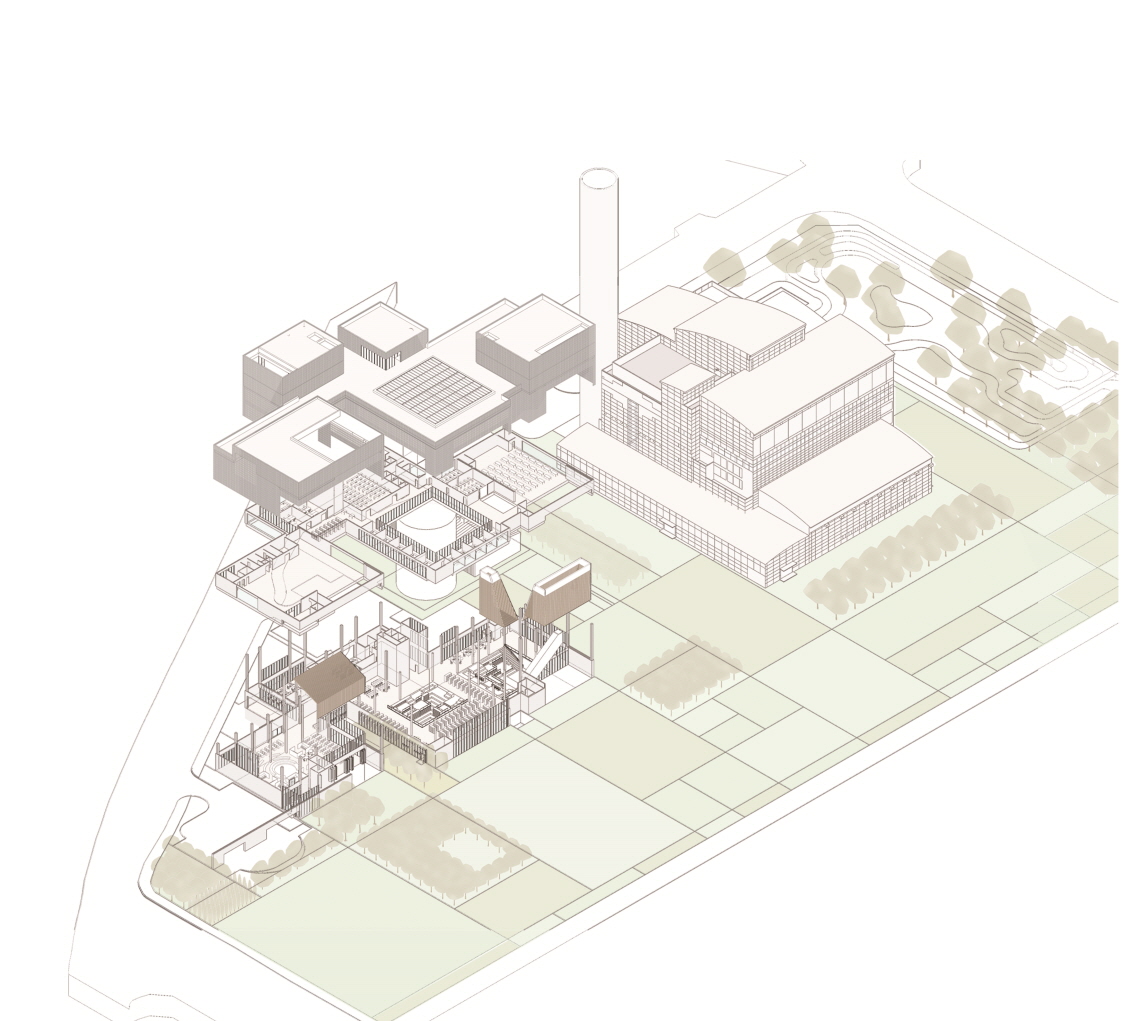
A System of Courtyards
We hope that the Gwangju City Main Library will be a meaningful place to capture the memories and identities of the city. The system of courtyards, with its people-centered and democratic quality, is intended to act as an urban development principle that applies not only to the library but also to Sangmu Culture Park Zone. The concept is significant given that contemporary libraries are changing their role from the place of storage to the place of culture and communication. As the system of courtyards extended from the library penetrates into the urban everyday space, the library can get a new significance as an architectural stimulus in which the library coexists in the urban space instead of being the symbolic object.
Urban Context and System of Courtyards
History and Memories
The Sangmu district, which was used as a military training center after the Korean War, was developed as a cultural complex by relocating military facilities. Since the incinerator was set up in 2001, it has become a site of social conflict due to environmental issues. The library will be built according to the Sangmu cultural park development plan, and the incinerator, which is a place of conflict, will be reborn as a place of communication and harmony along with the library's function. Therefore, how to present a place for communication and harmony is important.
Urban Condition
The Sangmu district is a large area, 1.5km long and 350m wide, from the project site to the Kimdaejung Convention Center. The city block is very large and there is no pedestrian-level urban activity, and the buildings have their own programs but are isolated and do not communicate with each other.
System of Courtyards
The idea is to design a spatial structure which covers the whole site, built and unbuilt. This structure is a collection of connected enclosed spaces – courtyards, enclosed gardens, built spaces. Each of these spaces has its own purpose and left-over space is avoided. Built space and open space have equal value – maybe the former is only a special case of the latter. The goal is twofold: 1. To make all space meaningful 2. To have a spatial concept which can easily be extended in later phases Boundaries
Boundaries of the system of courtyards are the edges of the territories. The boundary between the diverse spaces has a role of separation as well as connection. It can be a cognitive barrier of each courtyard. The tactile walls of building masses, trees and bamboo are suggested to form these boundaries. There are already a lot of trees on the site and bamboo is a popular plant in Gwangju area which in Korean cultural thinking about landscape symbolizes the intellect.
Gwangju
City of Democracy
Gwangju is one of the most representative cities of democracy in Korea. Our idea is mainly based on this circumstance. One could even say that this is a ‘democratic’ system: all spaces are equal and accessible to all people. There is deliberately no hierarchy. All the spaces created by the system of courtyards can be appropriated by the people of Gwangju, inside and outside. This means that all spaces will be the place of the people, by the people and for the people, especially for the citizens of Gwangju.
City of Light
The name of city Gwangju is represents the glorious sun shine city. In this regard, we wanted to install light wells in some of the courtyards to create a library full of light. This light well concept was extended to the urban use of mobile libraries and used as a renovation concept for the incinerator. The space of light expands throughout the Sangmu Culture Park in combination with the library program, thereby making it a strategy to emphasize the meaning of light in the library space and at the same time to emphasize the urban identity of the city of light.
Urban Development and Integration Concept
Rehabilitation of the incinerator
The incinerator is a large industrial facility with a huge space inside. There is a 10m underground space in a part of the building. Its spatial characteristics allow the library's sectional concept to be extended and applied in the incinerator as well. Therefore, we created a spatial integration between the two buildings by forming a passageway connecting the two basements, creating a stepped agora and a light well inside both of them. On the other hand, the heat supply facility site can be used as an expanded parking area after the relocation so that we planned the parking lot adjacent to it.
Urban Integration of Sangmu District
The Sangmu Culture Park Zone is a complex of sports and cultural facilities, including a library. It can be seen that the pedestrian axis connecting North and South should be created for the programmatic linkage. However, these pedestrian axes are huge and cannot contain actual urban activities. Therefore, grids that divide the large blocks into small tissues were arranged to form courtyards and urban installations. So, the system of courtyards has enabled pedestrian-level urban connection and integration.
Architectural Concept
Ground-level Horizontal Openness
We have transparently opened the ground floor of the library to maximize accessibility. In addition, the main program of the library was placed on the ground floor to allow visual communication from the outside to the inside and vice versa. In other words, the program inside the library is recognized as a landscape from the outside, and in the same way, the outside green space is displayed horizontally as the background of the space.
Stepped Agora and Light Well
The Stepped Agora and Light Well were planned to vertically expand the horizontal space layout of the library's main program. Two architectural ideas were proposed as a way to create a sense of place. The two Stepped Agora are the symbolic places of the library, contributing to the formation of a new library atmosphere, and the Light Well is the medium that brings together the light of the sky and the library. These two elements are scattered throughout the Sangmu Culture Park Zone as urban devices, contributing to the urban expansion of the library's place memory.
From ‘Corridor to Room’ to ‘Room to Room’
The concept of 'Room to Room' enables a direct link between spaces compared to the concept of 'Corridor to Room'. If 'Corridor to Room' enhances the functional individualization of rooms and corridors, 'Room to Room' facilitates the spatial response to changing programs. Thus, the concept of 'room to room' becomes the principle of spatial composition from 'fuction-oriented' to 'relation-oriented' architecture.
Symbolic Space Program in memory of the 5.18 Democratization Movement
We have set up two dedicated spaces to hold the memory of the 5.18 Democratization Movement, a historical event in Gwangju. These are the 5.18 Memorial library on the 3rd and 4rd floor and the Memorial Hall on the ground floor. These spaces are connected with the main space of the library and have a visually clearly recognizable approach. In other words, it is a way for Gwangju citizens who use the library to access historical records at any time.